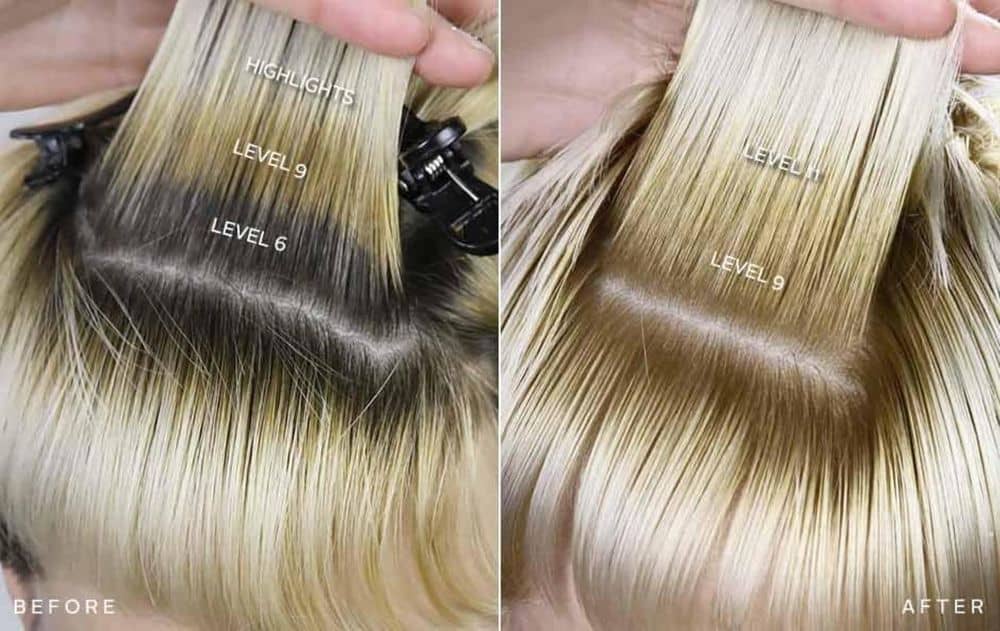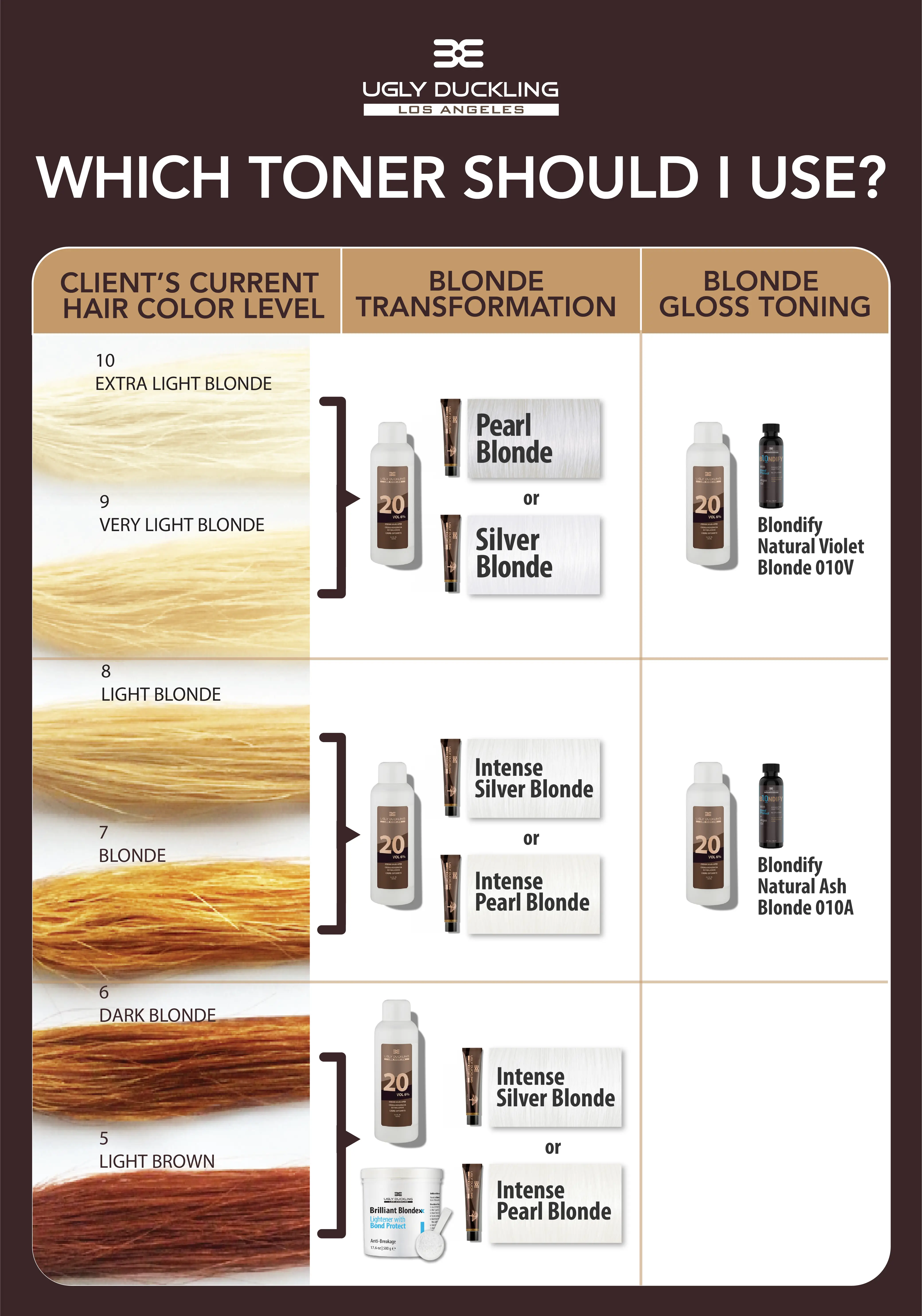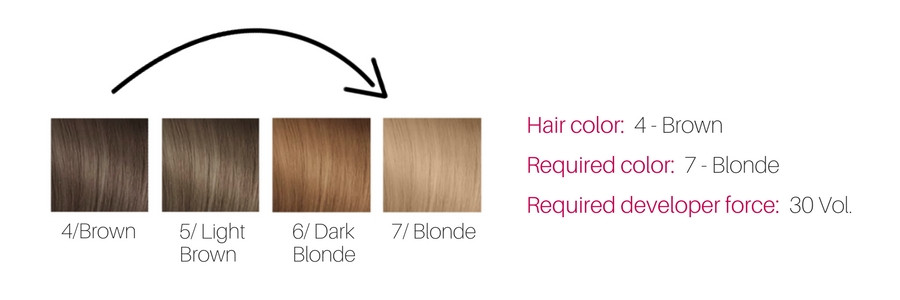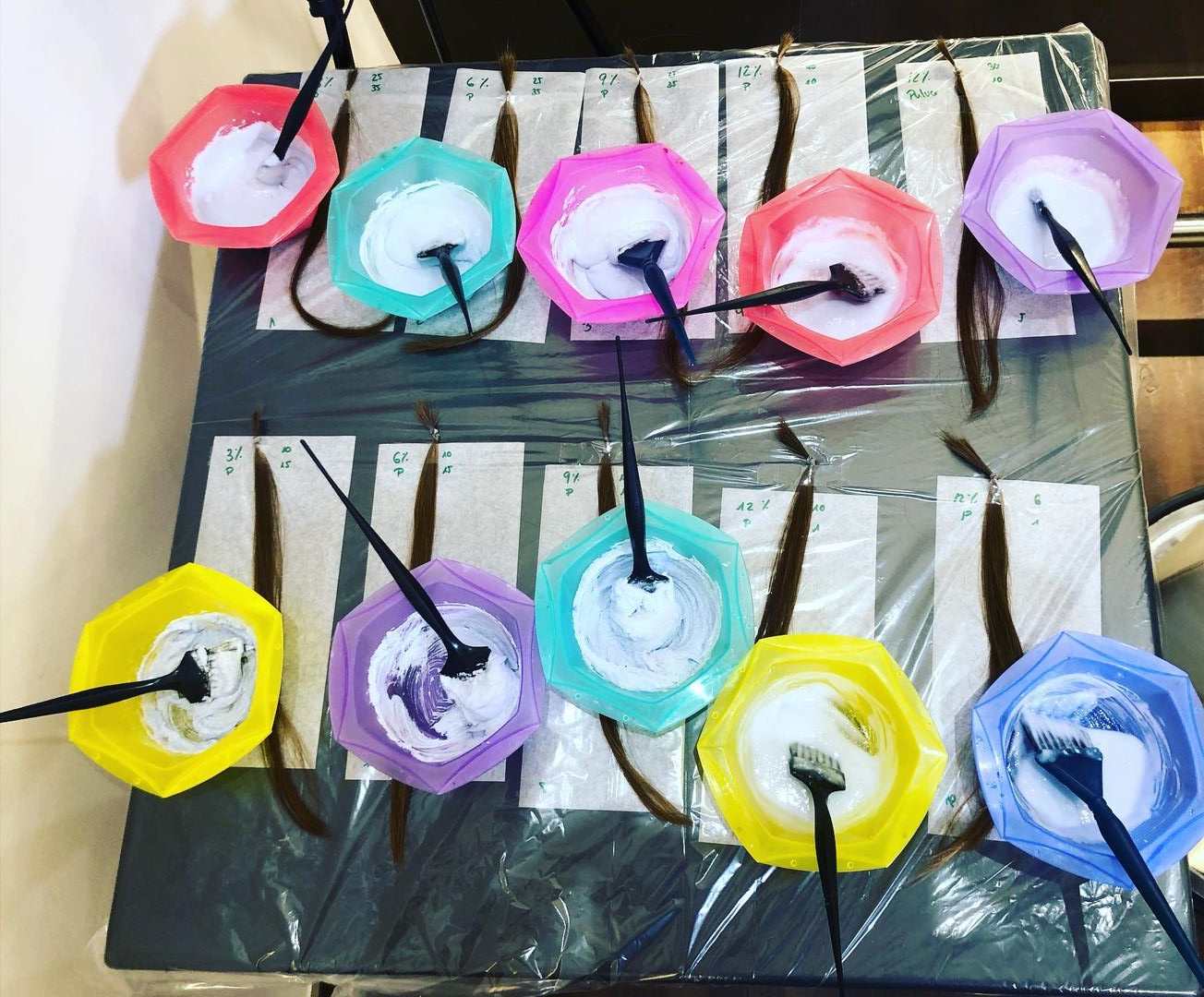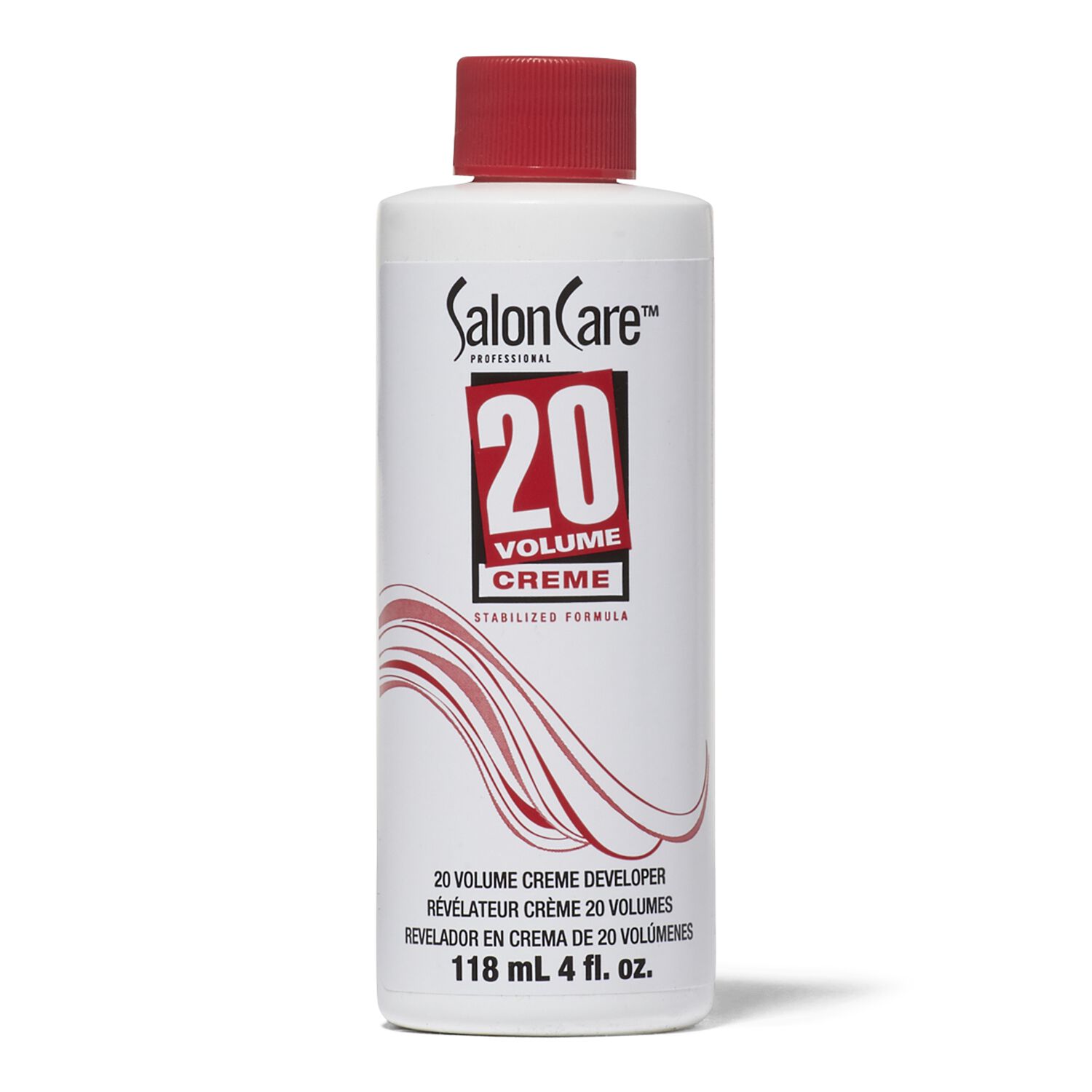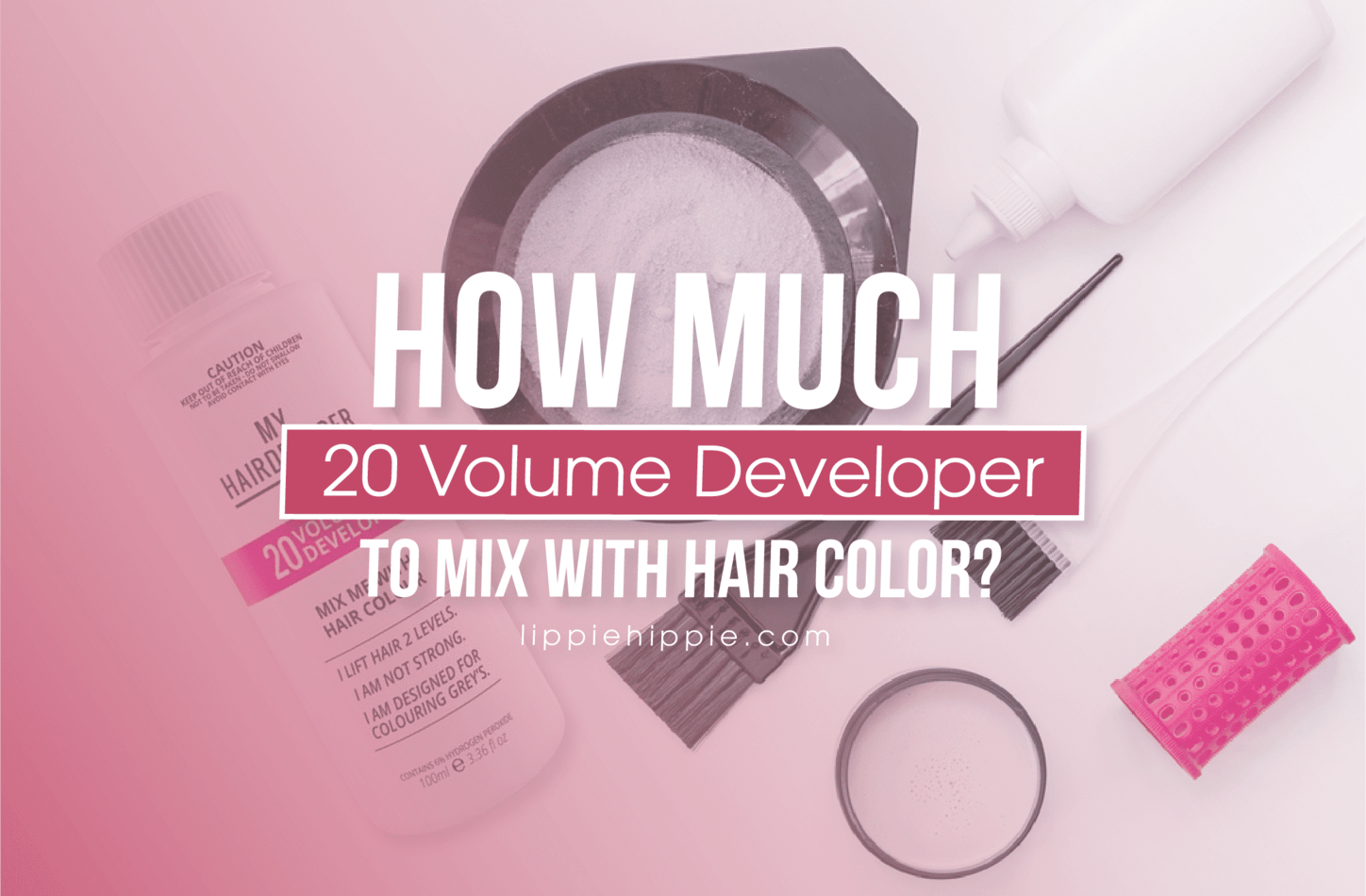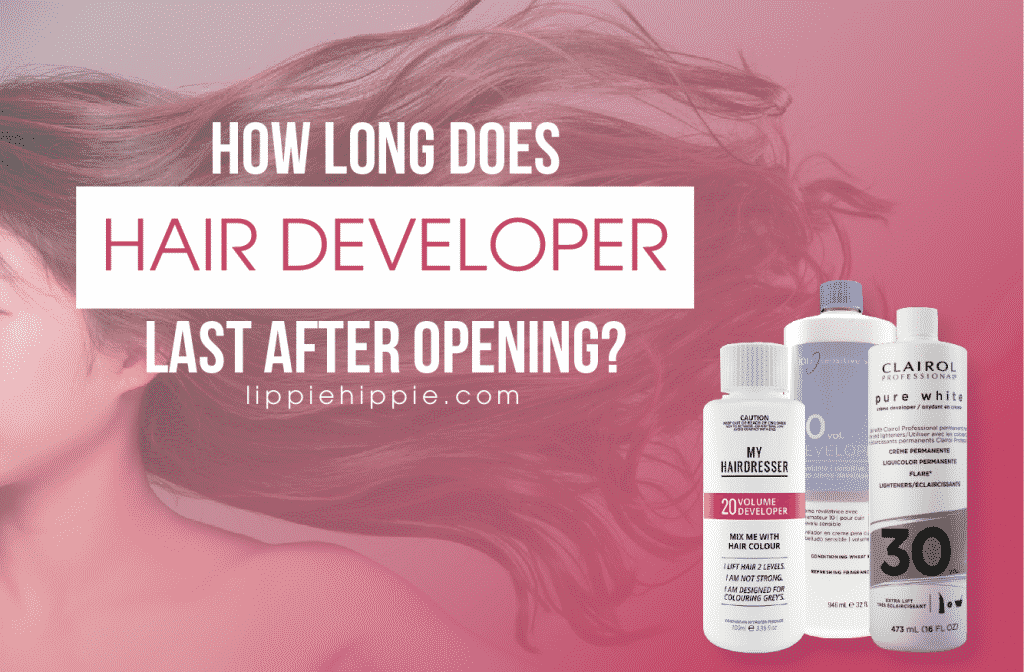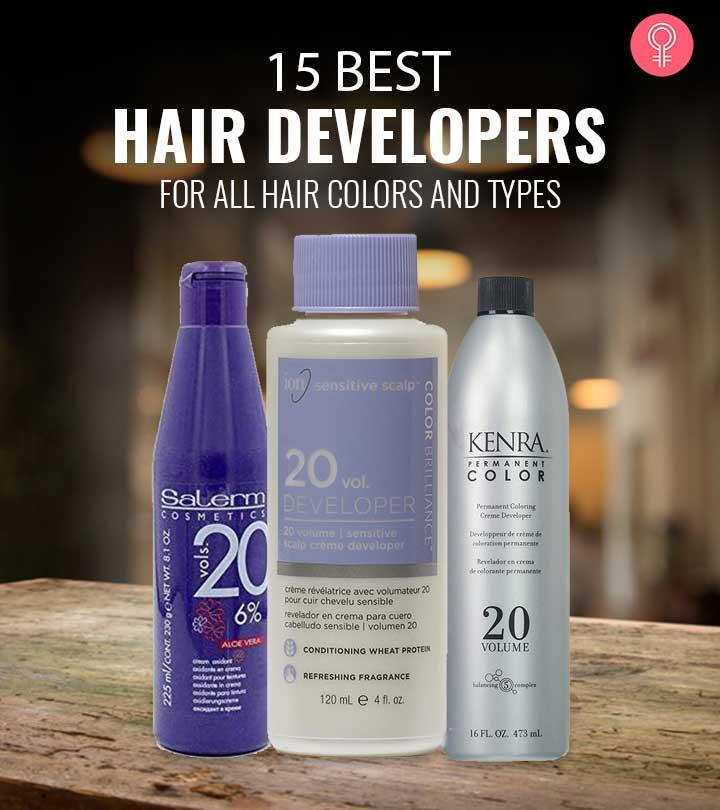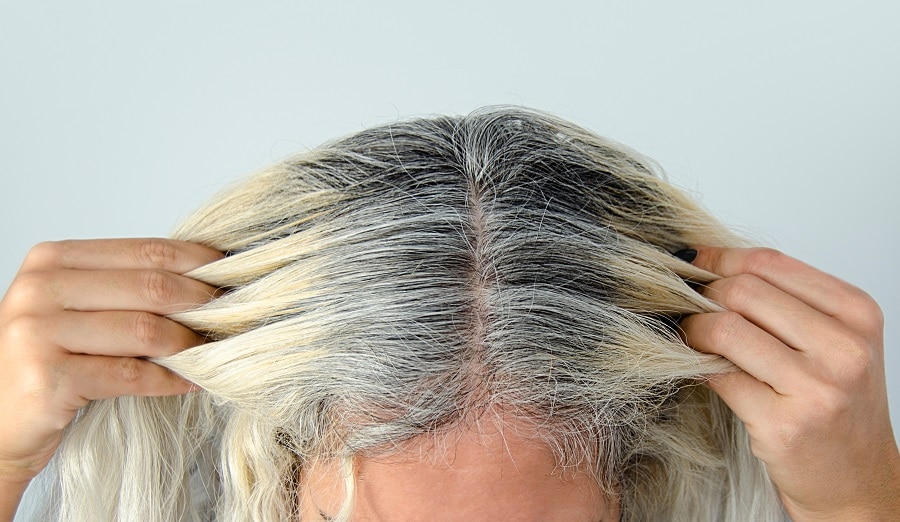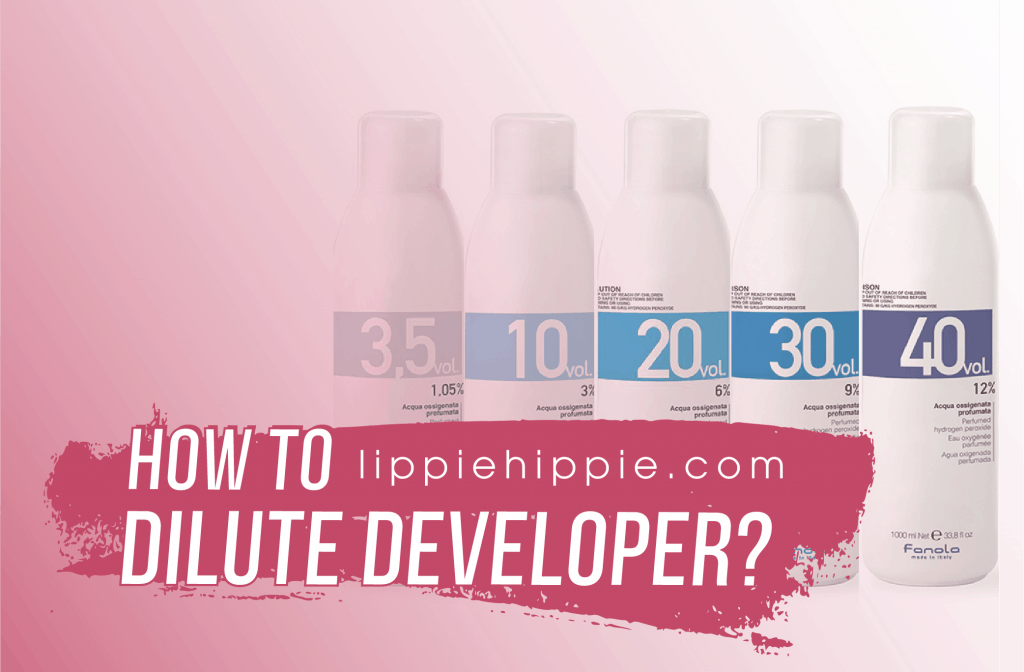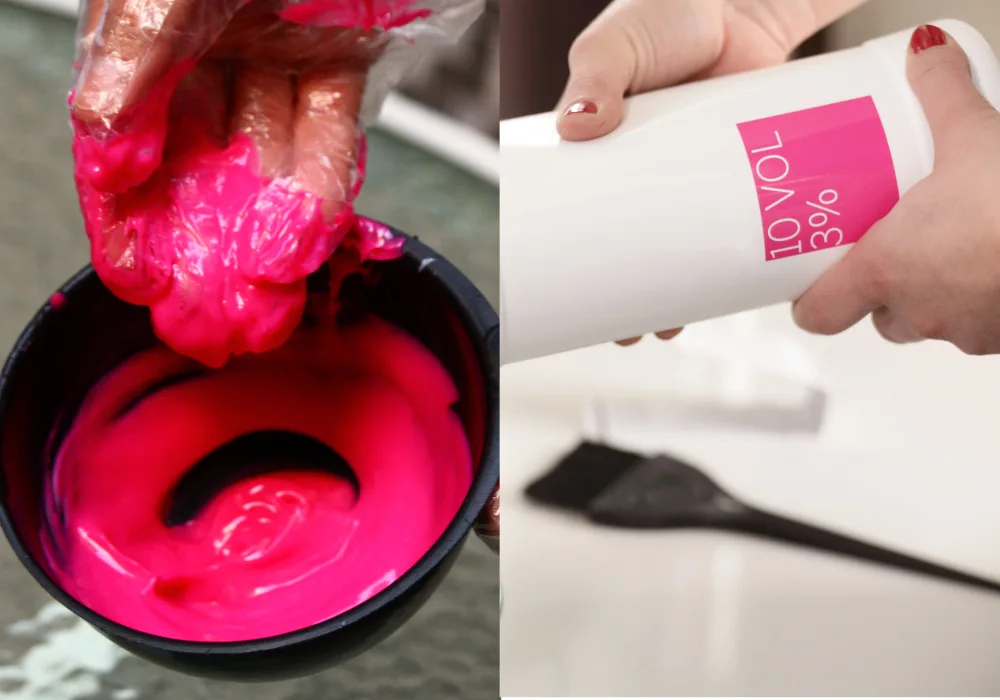Can You Mix 20 Volume And 30 Volume Developer

The question of whether it's safe or effective to mix 20 volume and 30 volume hair developers is a common one in both professional and at-home hair coloring circles. This seemingly simple query delves into the complexities of chemical reactions, hair structure, and ultimately, the potential for desired or undesired results.
The answer, while nuanced, is generally: yes, you *can* mix them. The resulting mixture would theoretically create a developer with a volume somewhere in between the two, likely around 25 volume.
However, the real question is should you mix them? And what are the potential consequences of doing so?
Understanding Hair Developer and its Role
Hair developer, typically hydrogen peroxide, is a crucial component of the hair coloring process. It serves two primary functions: to open the hair cuticle, allowing the dye molecules to penetrate, and to lighten the hair's natural pigment.
The "volume" of a developer refers to its concentration of hydrogen peroxide. A 20 volume developer contains 6% hydrogen peroxide, while a 30 volume developer contains 9%. The higher the volume, the more lifting power, and the faster the color processes.
Different hair types and desired color changes require different developer volumes. A darker dye on already light hair might only need a low volume developer, while significantly lightening dark hair requires a higher volume.
The Mechanics of Mixing Developers
Mixing 20 and 30 volume developers is essentially creating a diluted version of the 30 volume. The exact volume of the resulting mixture depends on the ratio of each developer used.
For instance, a 50/50 mix would theoretically result in a 25 volume developer, containing approximately 7.5% hydrogen peroxide. This provides a gentler lifting power than 30 volume but a stronger one than 20 volume.
Theoretically, this allows for customized control over the lifting process. However, inconsistencies in measurement can lead to unpredictable results.
Why People Consider Mixing Developers
The primary reason people consider mixing developers is to achieve a specific level of lift or processing speed that falls between readily available options. Perhaps 30 volume is considered too harsh, and 20 volume not strong enough.
Another common reason is attempting to mitigate damage. The belief is that a lower volume developer, even slightly lower, will be less damaging to the hair.
Finally, in some cases, mixing developers may be born from necessity when a user runs out of the desired volume and has only others readily available.
Potential Risks and Considerations
While technically possible, mixing developers introduces several potential risks. The biggest risk is inconsistency. At-home mixing relies on accurate measurement, which can be challenging.
Inaccurate ratios can lead to uneven color processing, hot roots (where the roots process faster due to heat from the scalp), or damage to the hair. Furthermore, inconsistent results may make it hard to replicate the process again.
Professional colorists typically discourage mixing developers because of the unpredictable results and the availability of a wide range of professional-grade developers that eliminate the need for mixing.
Professional vs. At-Home Mixing
In a professional salon setting, colorists have access to precise measuring tools and a deeper understanding of hair chemistry. They can formulate custom developer strengths using stabilized formulas.
At home, the risks are amplified due to less precise measuring tools and potentially limited understanding of the chemical reactions involved. This makes achieving a consistent and predictable outcome more difficult.
According to Lisa Shepherd, a well known colorist, "Mixing developers at home is something I would advise people not to do, the risk of uneven color and damage is significant."
Expert Opinions and Recommendations
Most hair care professionals recommend using a single volume developer that is appropriate for the desired result. They advise against mixing developers due to the potential for unpredictable outcomes and damage.
If a gentler approach is desired, professionals recommend using a lower volume developer for a longer processing time. Alternatively, employing protective treatments like bond builders can help minimize damage associated with higher volume developers.
Ultimately, consulting with a professional colorist is the best way to achieve desired results while minimizing the risk of damage. A professional can assess your hair type, condition, and desired color to recommend the appropriate developer volume and application technique.
Alternatives to Mixing Developers
Rather than mixing, consider alternative approaches. Using a lower volume developer, like 20 volume, and simply processing for a longer time is an option.
Another solution is to use a protein treatment before and after coloring. Protein treatments can help strengthen the hair shaft and reduce the impact of the coloring process.
Finally, look into using a bond-building treatment along with your color. Bond-building treatments, such as Olaplex, help repair and protect the hair's internal structure during the coloring process, minimizing damage.
Conclusion
While technically possible to mix 20 and 30 volume developers, it's generally not recommended, particularly for at-home use. The risks of inconsistent results, uneven color, and potential damage outweigh the perceived benefits.
Prioritizing hair health and predictable outcomes is key. Consulting with a professional or exploring safer alternatives, like lower volume developers or bond-building treatments, is a more reliable path to achieving beautiful, healthy hair.
Ultimately, informed choices lead to better results, protecting your hair and ensuring you achieve the desired color with confidence.
